Introduction to Space-Time Wireless Communications
Contents
Preface
1.Introduction
1.1 History of radio, antennas and array signal processing
1.2 Exploiting multiple antennas in wireless
1.2.1 Array gain
1.2.2 Diversity gain
1.2.3 Spatial multiplexing (SM)
1.2.4 Interference reduction
1.3 ST wireless communication systems
2.ST propagation
2.1 Introduction
2.2 The wireless channel
2.2.1 Path loss
2.2.2 Fading
2.3 Scattering model in macrocells
2.4 Channel as a ST random field
2.4.1 Wide sense siationarity (WSS)
2.4.2 Uncorrelated scattering (US)
2.4.3 Homogeneous channels (HO)
2.5 Scattering functions
2.6
Polarization and field diverse channels
2.7 Antenna array topology
2.8 Degenerate channels
2.9 Reciprocity and its implications
3.ST channel and signal models
3.1 Introduction
3.2 Definitions
3.2.1 SISO channel
3.2.2 SIMO channel
3.2.3 MISO channel
3.2.4 MIMO channel
3.3 Physical scattering model for ST channels
3.3.1 SIMO channel
3.3.2 MlSO channel
3.3.3 MIMO channel
3.4 Extended channel models
3.4.1 Spatial fading correlation
3.4.2 LOS Component
3.4.3 Cross-polarized antennas
3.4.4 Degenerate chavmels
3.5 Statistical properties of H
3.5.1 Singular values ot H
3.5.2 Squared Frobenius norm of H
3.6 Channel measurements and test channels
3.7 Sampled signal model
3.7.1 Normalization
3.7.2 SISO sampled signal model
3.7.3 SIWO sampled signal model
3.7.4 MISO sampled signal model
3.7.5 MIMO sampled signal model
3.8 ST multiuser and ST interference channels
3.8.1 ST multiuser channel
3.8.2 ST interference channel
3.9 ST channel estimation
3.9.1 Estimating the ST channel at the receiver
3.9.2 Estimating the ST channel at the transmitter
4.Capacity of ST channels
4.1 Introduction
4.2 Capacity of the frequency flat deterministic MIMO channel
4.3 Channel unknown to the Iraosmitter
4.4 Channel known to the transmitter
4.4.1 Capacities of SIMO and MISO channels
4.5 Capacity of random MIMO channels
4.5.1 Capacity of channels for large M
4.5.2 Statistical characterization of the information rate
4.6 Influence of Ricean fading, fading correlation, XPD anddegeneracy on MIMO capacity
4.6.1 Influence of the spatial fading correlation
4.6.2 Influence of the LOS componerit
4.6.3 Influence of XPD in a non-fading channel
4.6.4 Influence of degeneracy
4.7 Capacity of frequency selective MIMO channels
5.Spatial diversity
5.1 Introduction
5.2 Diversity gain
5.2.1 Coding gain vs diversity gain
5.2.2 Spatial diversity vs time/frequeitcy diversity
5.3 Receive antenna diversity
5.4 Transmit antenna diversity
5.4,1 Channel unknown to the transmitter; MlSO
5.4.2 Channel known to the transmitter: MISO
5 4.3 Channel unknown to the transmitter: MIMO
5.4.4 Channel known to the transmitter: MIMO
5.5 Diversity order and channel variability
5.6 Diversity performance in extended channels
5.6.1 Influence of signal correlation and gain imbalance
5.6.2 Influence of Ricean fading
5.6.3 Degenerate MIMO channels
5.7 Combined space and path diversity
5.8 Indirect transmit diversity
5.8.1 Delay diversity
5.8,2 Phase-roll diversity
5.9 Diversity of a space-time-frequency selective fading channel
6. ST coding without channel knowledge at Transmitter
6.1 Introduction
6.2 Coding and interleaving architecture
6.3 ST coding for frequency flat channels
6.3.1 Signal model
6.3.2 ST codeword design criteria
6.3.3 ST diversity cod'ung (rs < 1)
6.3.5 Spatial multiplexing as a ST code (rs = Mr)
6.3.6 ST coding for intermediate rates (1 < rs < Mt}
6.4 ST coding for frequency selective channels
6.4.1 Signal model
6.4.2 ST codeword design criteria
7.ST receivers
7.1 Introduction
7.2 Receivers: SISO
7.2.1 Frequency flat channel
7.2.2 Frequency selective channel
7.3 Receivers: SIMO
7.3,1 Frequency flat channel
7.3.2 Frequency selective channels
7.4 Receivers: MIMO
7.4.1 ST diversity schemes
7.4 2 SM schemes
7.4.3 SM with horizontal and diagonal encoding
7.4.4 Frequency selective channel
7.5 Iterative MIMO receivers
8.Exploiting channel knowledge at the transmitter
8.1 Introduction
8.2 Linear pre-filtering
8.3 Optimal pre-filtering for maximum rate
8.3.1 Full channel knowledge
8.3.2 Partial channel knowledge
8.4 Optimal pre-filtering for error rate minimization
8.4.1 Full channel knowledge
8.4.2 Partial channel knowledge
8.5 Selection at the transmitter
8.5.1 Selection between SM and diversity coding
8.5.2 Antenna selection
8.6 Exploiting imperfect channel knowledge
9.ST OFDM and spread spectrum modulation
9.1 Introduction
9.2 SISO-OFDM modulation
9.3 MIMO-OFDM modulation
9.4 Signaling and receivers for M圃O-OFDMl
9.4.1 Spatial diversity coding for MIMO-OFDM
9.4.2 SM for MIMO-OFDM
9.4.3 Space-frequency coded MIMO-OFDM
9.5 SISO-SS modulation
9.5.1 Frequency flat channel
9.5.2 Frequency selective channel
9.6 MIMO-SS modulation
9.7 Signaling and receivers for MIMO-SS
9.7.1 Spatial diversity coding for MIMO-SS
9.7.2 SM for MIMO-SS
10.MIMO-multiuser
10.1 Introduction
10.2 MIMO-MAC
10.2.1 Signal model
10.2.2 Capacity region
10.2 3 Signaling and receiver design
10.3 MIMO-BC
10.3.1 Signal model
10.3.2 Forward link capacity
10.3,3 Signaling and receiver design
10.4 Outage performance of MIMO-MU
10.4.1 MU vs SU _ single cell
10.4.2 MU single cell vs SU multicell
10.5 MIMO-MU with OFDM
10.6 CDMA and multiple antennas
11.ST co-channel interference mitigation
11.1 Introduction
11.2 CCI characteristics
11.3 Signal models
11.3,1 SIMO Interference model (reverse link)
11.3.2 MIMO interference channel (any link)
11.3,3 MISD interference channel (forward link)
11.4 CCI mitigation on receive for SIMO
11.4.1 Frequency flat channel
11.4.2 Frequency selective channel
11.5 CCI mitigating receivers for MIMO
11.5.1 Aiamouti coded signal and interference (MT = 2}
11.6 CCI mitigation on transmit for MlSO
11.6.1 Transmlt-MRC or matched beamforming
11.6.2 Transmit ZF or nulling beamformer
11.6.3 Max SINR beamforming with coordination
11.7 Joint encoding and decoding
11.8 SS modulation
11.8.1 ST-RAKE
11.8.2 ST pre-RAKE
11.9 OFDM modulation
11.10 Interference diversity and multiple antennas
12.Performance limits and tradeoffs in MIMO channels
12.1 Introduction
12.2 Error performance in fading channels
12.3 Signaling rate vs PER vs SNR
12.4 Spectral efficiency of ST coding/receiver techniques
12.4.1 D-BLAST
12.4.2 OSTBC
12.4.3 ST receivers for SM
12.4.4 Receiver comparison: Varying Mr Mu
12.5 System design
12.6 Comments on capacity
References1
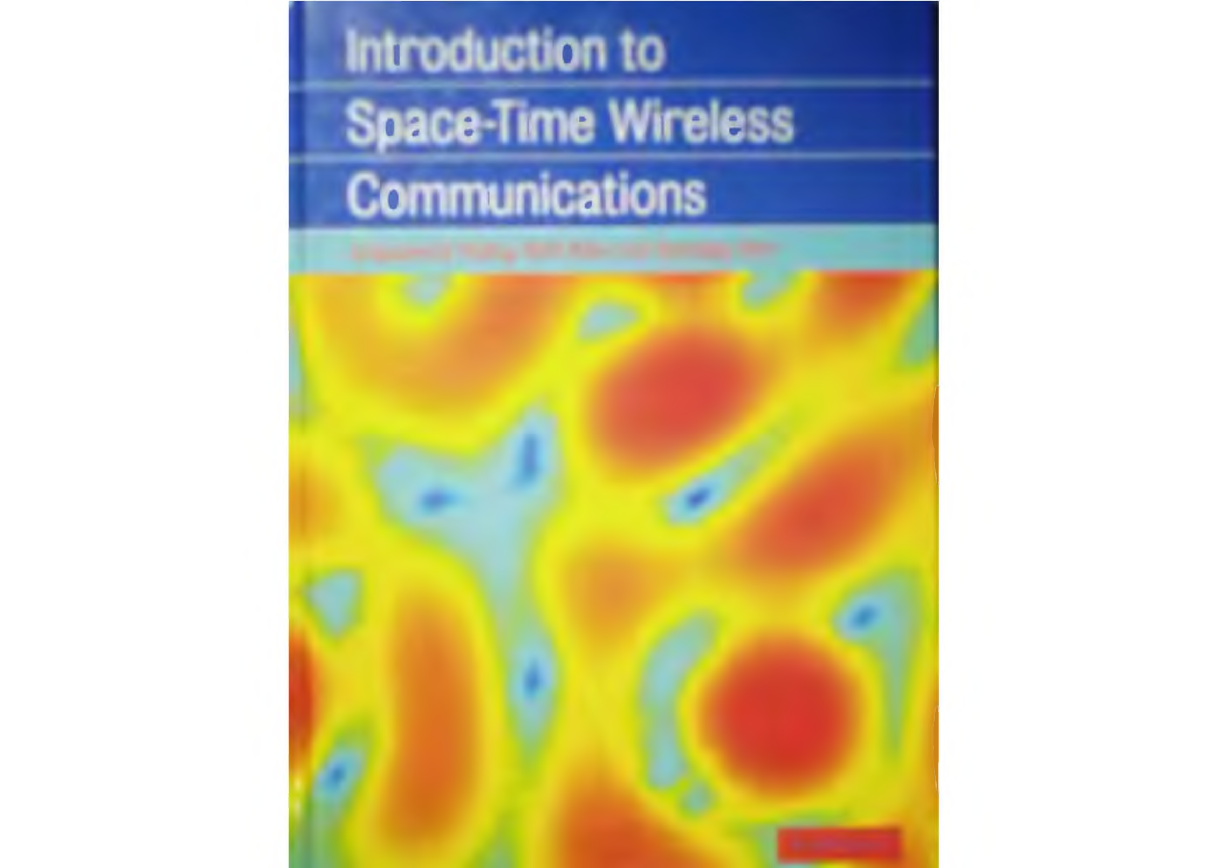

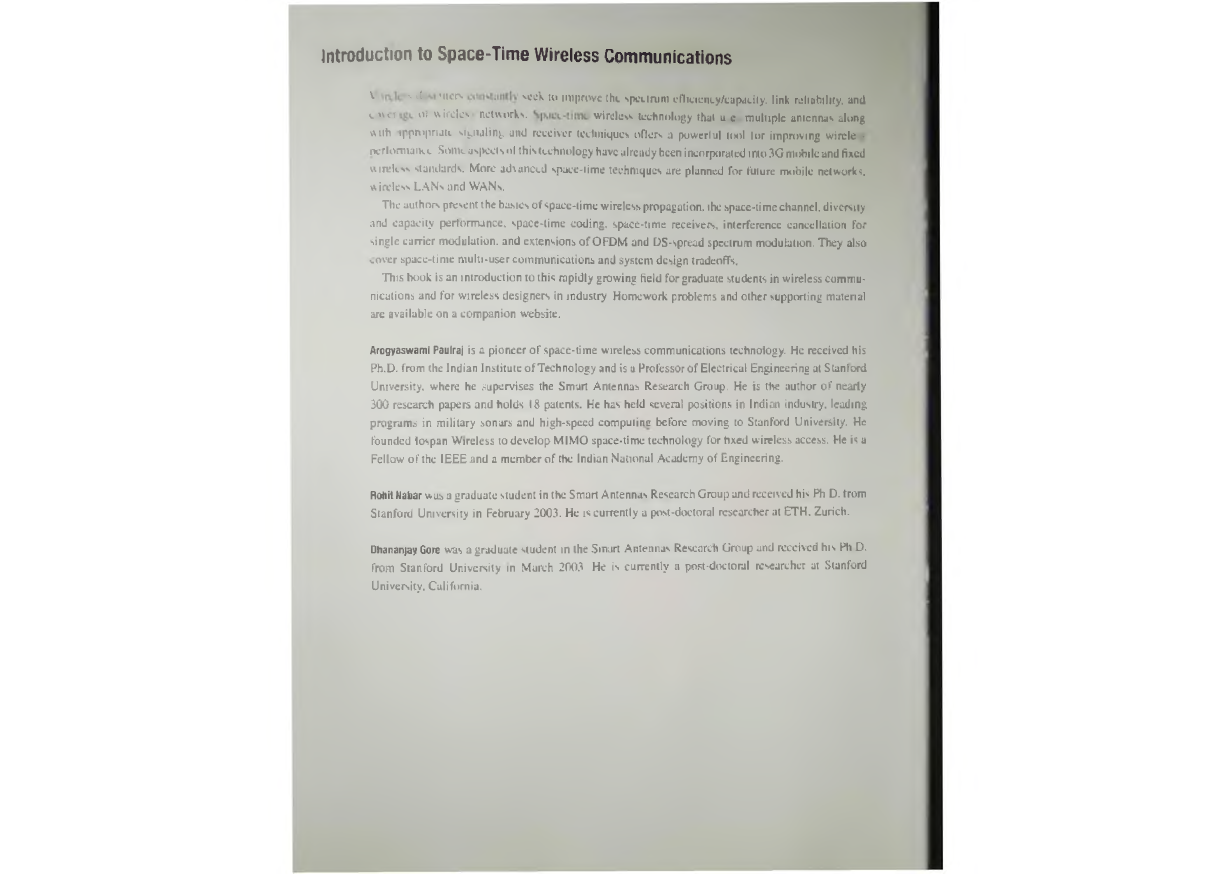

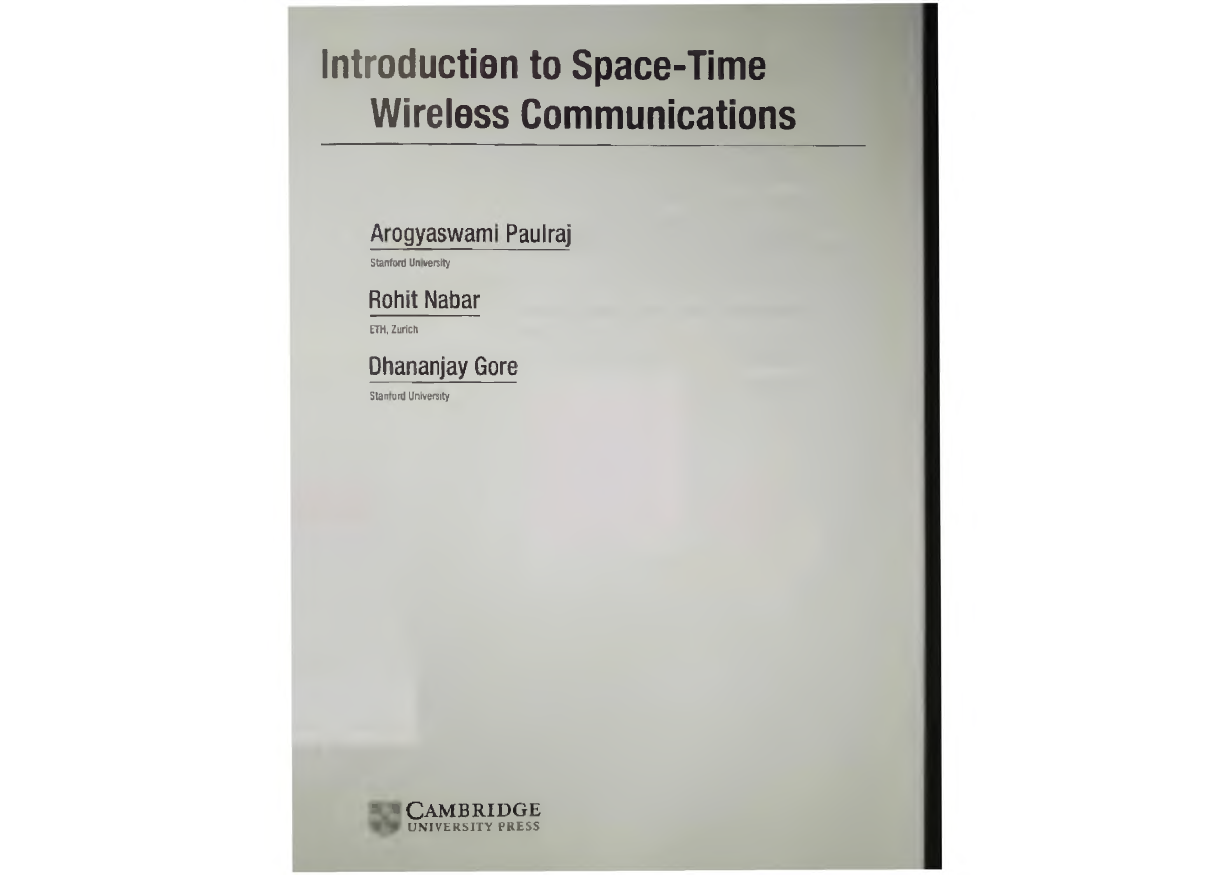
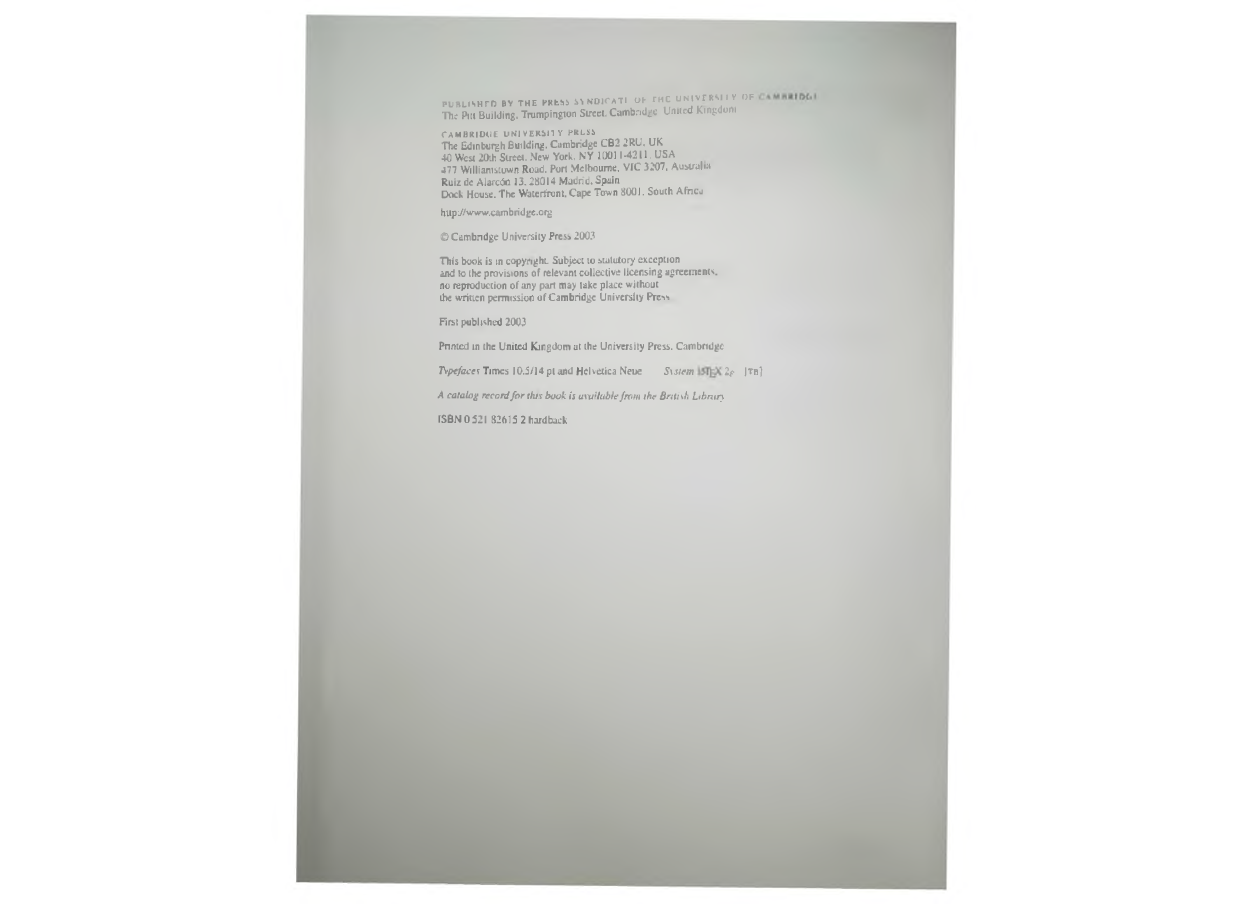
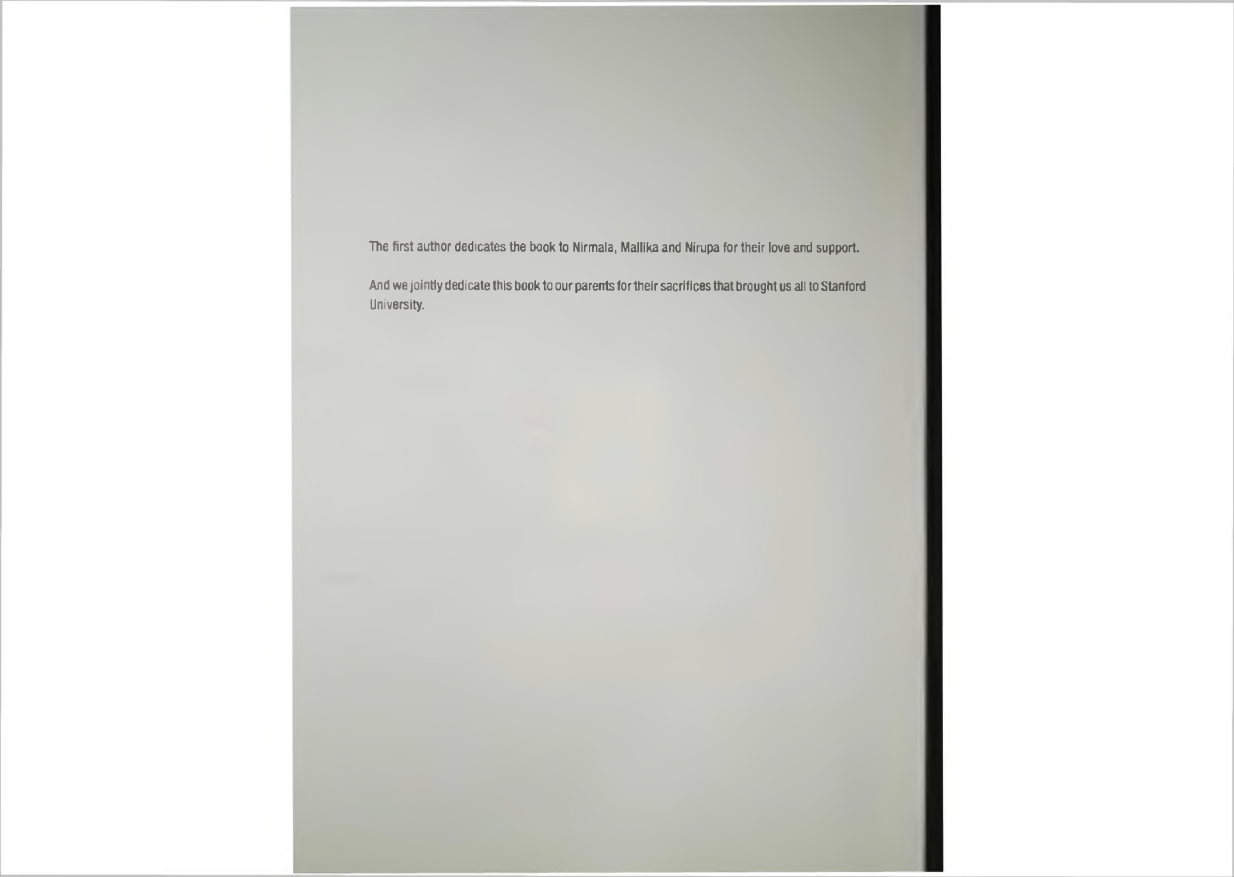









 2023年江西萍乡中考道德与法治真题及答案.doc
2023年江西萍乡中考道德与法治真题及答案.doc 2012年重庆南川中考生物真题及答案.doc
2012年重庆南川中考生物真题及答案.doc 2013年江西师范大学地理学综合及文艺理论基础考研真题.doc
2013年江西师范大学地理学综合及文艺理论基础考研真题.doc 2020年四川甘孜小升初语文真题及答案I卷.doc
2020年四川甘孜小升初语文真题及答案I卷.doc 2020年注册岩土工程师专业基础考试真题及答案.doc
2020年注册岩土工程师专业基础考试真题及答案.doc 2023-2024学年福建省厦门市九年级上学期数学月考试题及答案.doc
2023-2024学年福建省厦门市九年级上学期数学月考试题及答案.doc 2021-2022学年辽宁省沈阳市大东区九年级上学期语文期末试题及答案.doc
2021-2022学年辽宁省沈阳市大东区九年级上学期语文期末试题及答案.doc 2022-2023学年北京东城区初三第一学期物理期末试卷及答案.doc
2022-2023学年北京东城区初三第一学期物理期末试卷及答案.doc 2018上半年江西教师资格初中地理学科知识与教学能力真题及答案.doc
2018上半年江西教师资格初中地理学科知识与教学能力真题及答案.doc 2012年河北国家公务员申论考试真题及答案-省级.doc
2012年河北国家公务员申论考试真题及答案-省级.doc 2020-2021学年江苏省扬州市江都区邵樊片九年级上学期数学第一次质量检测试题及答案.doc
2020-2021学年江苏省扬州市江都区邵樊片九年级上学期数学第一次质量检测试题及答案.doc 2022下半年黑龙江教师资格证中学综合素质真题及答案.doc
2022下半年黑龙江教师资格证中学综合素质真题及答案.doc